
Get Stem Cell Therapy for Age Related Macular Degeneration in Delhi, India
Stem cell therapy is becoming the hope for those patients who are suffering from age related macular degeneration. Our researchers focus on replacing damaged cells in the macula which helps to restore the vision. Traditional treatment only reduces the symptoms but now due to remarkable progress of stem cell therapy. It is easy to restore the vision of a patient by using natural processes. Stem cells are specialised cells of our body which have the potential of regeneration to reduce the symptoms and enhance the quality of life. These cells can be derived from bone marrow or adipose tissue (Fat Tissue). After harnessing its regenerative potential, we transplant it to the affected area to treat the condition.
Stem Cell Therapy for Age Related Macular Degeneration
We can accurately read something with the aid of our intact eyes, distinctly see close or far distant things, drive cautiously, and many other everyday routine operations with ease. So what happens if there is no vision or dysfunction in the eyes, ever imagined? The easy explanation is that life is going to get worse, based on others and circumstances are not going to be in our favor.
The central part of the eye, which continues to deteriorate with age, is Age-Related Macular Degeneration. The retina is the most light-sensitive component of the human eyes, and the vision would be increasingly compromised if any issue arises in this part. However while it won’t result in complete blindness, it will lead to severe vision deficiency. Aged people are more vulnerable to this condition, mostly elderly people.
Compared to Glaucoma patients with vision deficiency, it has been observed that patients with reduced visual activity caused by macular degeneration can find it very difficult to perform their everyday chores. Macular degeneration has a major influence on the social and psychological well-being of the patient.
Do you Know About Age Related Macular Degeneration?
Global Stem Cell Care has provided people who suffer from Age-Related Macular Degeneration, with the best medication, and their conditions have also changed with the treatment of stem cells. For this disorder, only stem cell therapy is the solution as it helps to restore the dead cells. Global Stem Cell Care has the strongest team that aims to handle this medical disorder successfully.
Age: In persons over 50 years of age, Macular Dystrophy/Degeneration is most common.
Personal history and inheritance: There is an inherited complex in this disorder. Several genes that are related to the condition have been identified by researchers.
Race: In Caucasians, more macular degeneration is observed.
Smoking: Smoking tobacco or being exposed to smoke raises the risk of experiencing macular degeneration substantially.
Obesity: Studies have shown that being obese can increase your risk of macular degeneration.
Cardiovascular disorder: You could be at increased risk of experiencing macular degeneration if you have encountered diseases that have damaged the heart and vascular system.
Global Stem Cell Care has provided people who suffer from Age-Related Macular Degeneration, with the best medication, and their conditions have also changed with the treatment of stem cells. For this disorder, only stem cell therapy is the solution as it helps to restore the dead cells. Global Stem Cell Care has the strongest team that aims to handle this medical disorder successfully.
Age: In persons over 50 years of age, Macular Dystrophy/Degeneration is most common.
Personal history and inheritance: There is an inherited complex in this disorder. Several genes that are related to the condition have been identified by researchers.
Race: In Caucasians, more macular degeneration is observed.
Smoking: Smoking tobacco or being exposed to smoke raises the risk of experiencing macular degeneration substantially.
Obesity: Studies have shown that being obese can increase your risk of macular degeneration.
Cardiovascular disorder: You could be at increased risk of experiencing macular degeneration if you have encountered diseases that have damaged the heart and vascular system.
HOW STEM CELL THERAPY FOR AGE RELATED MACULAR DEGENERATION WORKS?
The only alternative available as a cure for AMD, before the invention of stem cells, was a surgical procedure. The technique has been altered by stem cell science as the only non-surgical option possible that can undo the damage and halt AMD development.
The naive cells in the body, with the ability to differentiate into any cell of various organs, are stem cells. Medical science has used this ability of stem cells as a boon to treat various degenerative disorders such as, but not limited to, AMD. Global research has demonstrated that stem cells are the promising candidates for the effortless substitution of degenerated or weakened RPE layers in fresh cells, which are assumed to interrupt or reverse the resulting vision loss.
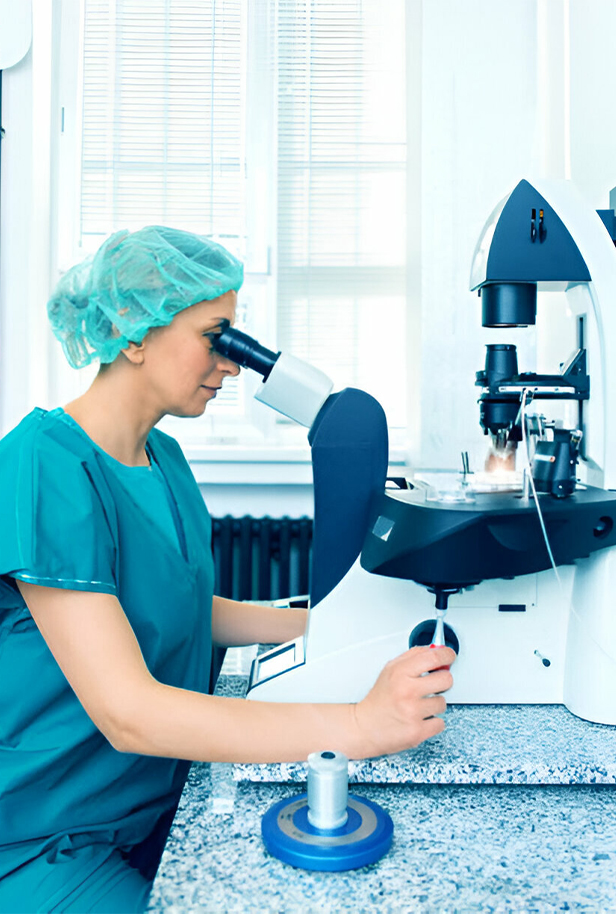

HOW STEM CELL THERAPY FOR AGE RELATED MACULAR DEGENERATION WORKS?
The only alternative available as a cure for AMD, before the invention of stem cells, was a surgical procedure. The technique has been altered by stem cell science as the only non-surgical option possible that can undo the damage and halt AMD development.
The naive cells in the body, with the ability to differentiate into any cell of various organs, are stem cells. Medical science has used this ability of stem cells as a boon to treat various degenerative disorders such as, but not limited to, AMD. Global research has demonstrated that stem cells are the promising candidates for the effortless substitution of degenerated or weakened RPE layers in fresh cells, which are assumed to interrupt or reverse the resulting vision loss.
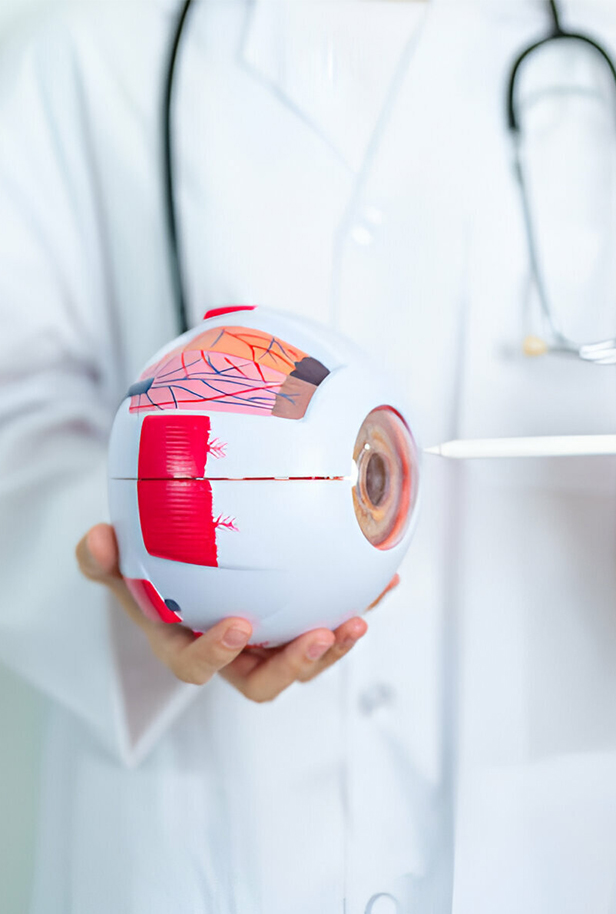
Diagnosis Of Age Related Macular Degeneration
In an annual dilated eye test, an eye doctor usually detects the first symptoms of Age-related Macular Degeneration. These include the presence of drunsen and pigment shifts in the macula, thin yet noticeable heaps of cell waste on the surface of the retina. Sometimes these symptoms of AMD are present well before any improvements in the vision of a person are visible. In reality, about anyone over the age of 50 has at least one small Druze. The visual acuity assessment requires regular screening exams.
Global Stem Cell Care helps patients reap the benefits of treatment with zero side effects and no risk of allergic or immune reactions. The expert team ensures you get the best stem cell therapy with long lasting results.
Types
Dry Age-Related Macular Degeneration
- Visual distortions
- Reduced central vision in one or both eyes
- The need for brighter light when reading or doing close-up work
- Increased difficulty adapting to low light levels
- Decreased intensity or brightness of colors
- Difficulty recognizing faces
- A well-defined blurry spot or a blind spot in your field of vision
Wet Age-Related Macular Degeneration
- Difficulty recognizing faces
- Decreased intensity or brightness of colors
- The need for brighter light
- Visual distortions
- Reduced central vision in one or both eyes
- Increased blurriness
- Well-defined blurry spot
Doctors do not know precisely why AMD occurs, but genetic and environmental factors may play a role, including oxidative stress.
Features of age-related macular degeneration include:
- changes in pigmentation
- drusen, which are fat deposits that appear as pale-yellow spots on the retina
- a thickening of Bruch’s membrane, a layer between the retina and the choroid
- basal laminar deposits on the retina consisting of collagen fibers and other substances
- in dry AMD, a thinning of the retina around the macula
- in wet AMD, new blood vessels form rapidly and incorrectly, leading to lesions, scarring, exuding of fluid, and internal bleeding
Nerve Growth Factor Treatment
The nerve growth factor is a member of the neurotrophic factor family, which can inhibit the death of nerve cells and has several features of typical neurotransmitter molecules. NGF plays an imperative role in the development and growth of nerve cells. NGF is synthesized and secreted by tissues. It can be up-taken by sympathetic or sensory nerve endings and then conveyed to be stored in neuronal cell bodies, encouraging the growth and differentiation of nerve cells. NGF can exert neurotrophic effects on injured nerves and promote neurogenesis closely related to the central nervous system’s development, functional maintenance, and darning.
Gene Therapy
Age-related macular degeneration presently affects many individuals and leads to vision loss among people. The frequency of the disease increases significantly with age, with more than 10% of the population over 70 years old showing signs of AMD. The new gene therapy technique involves putting copies of a gene producing a proprietary protein developed, which counteracts the inflammation caused by the complement system, into the retina cells to help them function normally.
Nutritional Therapy
Proper nutrition can improve macular health, so an eye-healthy diet reduces the risk of age-related macular degeneration (AMD). It could also slow the progression of AMD. Eating a healthy, well-balanced diet, including eye-friendly foods, will benefit your overall well-being and your eye health. An appropriate dietary supplement may help if your eye health foods are inadequate.
Peter Kinsey Visited India For The Treatment Of Age-Related Macular Degeneration
Hi, I am Peter from UK, and I came to India with my family to treat my age-related macular degeneration. One day, while searching for the same, I learned about stem cell treatment for my condition through Global Stem Cell Care. Then without any further delay, I contacted them via their Facebook page and discussed everything related to the issues. Now, after the treatment, I am very happy, and the results are encouraging. I can see a big difference in my vision. The pain was not as bad as I expected. I would recommend it to others.
Fabiola From Italy Came To Us To Treat Her Age-Related Macular Degeneration (AMD)
I have been suffering from AMD for a few years. After some time, I decided to go with stem cell treatment for my condition. Then I contacted Global Stem Cell Care and flew to India with my parents. When we reached there, they provided us with the best room in the hospital. We really appreciate the hospitality they have offered us. After the treatment, I am able to experience a lot of improvement in my vision and overall health condition.
Prateeksha From Mumbai Came To Us For Stem Cell Therapy To Treat Age-Related Macular Degeneration
I was a macular degeneration patient searching for a painless and affordable treatment for my condition. Then I found out about stem cell therapy, and many people will not believe me, but trust me, the treatment was painless, and it was a quick process. After not too much of a wait, the results were apparent. I had heard about the treatment from a relative whose friend recently got it for another condition. I had my doubts initially, but Global Stem Cell Care doctors helped me a lot.
Steve Brown Underwent Stem Cell Treatment To Eliminate Macular Degeneration
Hi, I am Steve from Florida. I had Age-related macular degeneration, and then my cousin suggested this stem cell treatment, and to be honest, it helped me a lot. So, if you are looking for something affordable and effective, I highly recommend this treatment, and the best part is that it has no side effects to worry about. We reached the hospital in a few days because of the support they are offering, and also, they helped me with all the VISA work. Their staff picked me up from the airport, and the doctors were well educated.
Related Disorders for Stem Cell Treatment
- optic nerve damage stem cell treatment
- stem cells cure retinitis pigmentosa
- is there a cure for optic nerve hypoplasia
- optic neuropathy stem cell treatment
- eye best’s disease treatment with stem cells
- stem cell therapy for retinopathy
- stem cells on glaucomatous optic nerve injury
- stem cell treatment retinal detachment
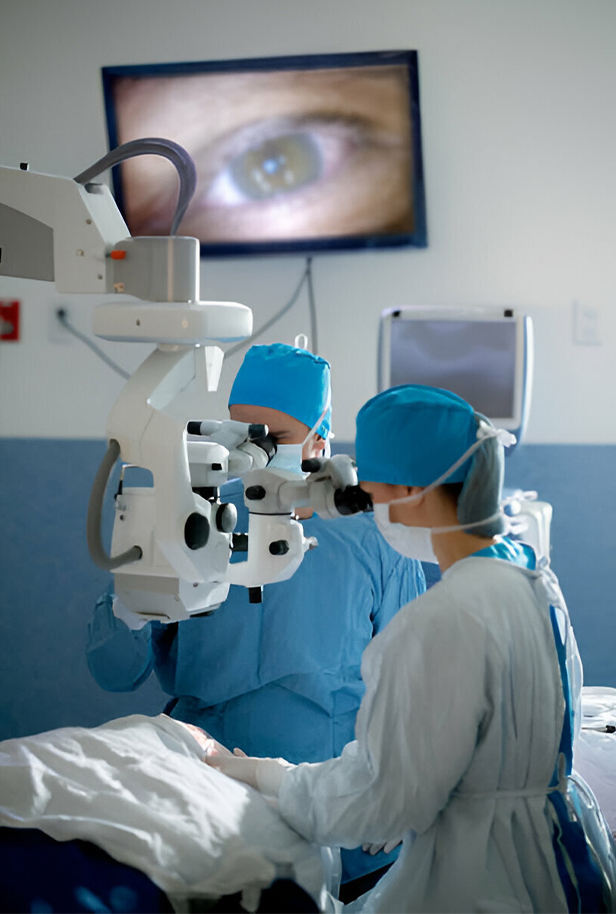
Implantation
Pluripotent stem cells, embryonic stem cells, and autologous cells, such as those originating in adipose tissue, bone marrow, and fetal cells, are targets for transplantation and have all been transplanted into patients with various degrees of effectiveness and debate. Normal vitrectomy, intraocular surgery, or the insertion of cells into the suprachoroidal space are the procedures for performing the transplant.
- Intravenous administration
- Liberation angioplasty
- Intrathecal (lumber puncture)
- Intramuscular
- Subcutaneous
- Surgical administration for stroke
- Intraarterial
With stem cell transplantation, restoring vision in AMD could be an opportunity. Given the high prevalence of age-related macular degeneration (AMD), which affects approximately 10 to 11 million people, of whom 2 million have serious visual loss, the need for vision enhancement care is evident.
Stem cell therapies require the active substitution of host cells and more generally, the release of trophic factors that promote the survival of existing cells, which are considered theoretically viable for the treatment of degenerative diseases. The gene therapy mutations that takes place, involves a broader indication that can theoretically be extended through the multiple degenerative diseases, especially in the presence of extensive cell loss.
MECHANISM
Stem cells can help restore the weakened retina and can contribute to a complete halt in the process of loss of vision, thus enhancing the general quality of life of humans. The new doors to the cure and changes in Macular Degeneration patients have been opened through Stem Cell Therapy.
Program for Stem Cell Therapies to treat multiple diseases. Each patient receives 200-300 million stem cells during the stem cell procedure. Not only does the sum of stem cells compensate everyday losses, but it beats them by a million times. The stem cell source, which has basically been missing for the last 15 to 20 years, is thus retrieved and revived. Different organs get rejuvenated following our stem cell injection, and they get revived when the new and activated stem cells replace the old ones fully.
Introduced into the retrobulbar space, stem cells may start to work on damaged tissue and begin to rejuvenate the optic fibers and retinal cells. Photoreceptors and other cells can be differentiated from mesenchymal stem cells. It is possible to use segregated stem cells to treat tumors in the macular and retinal cells.
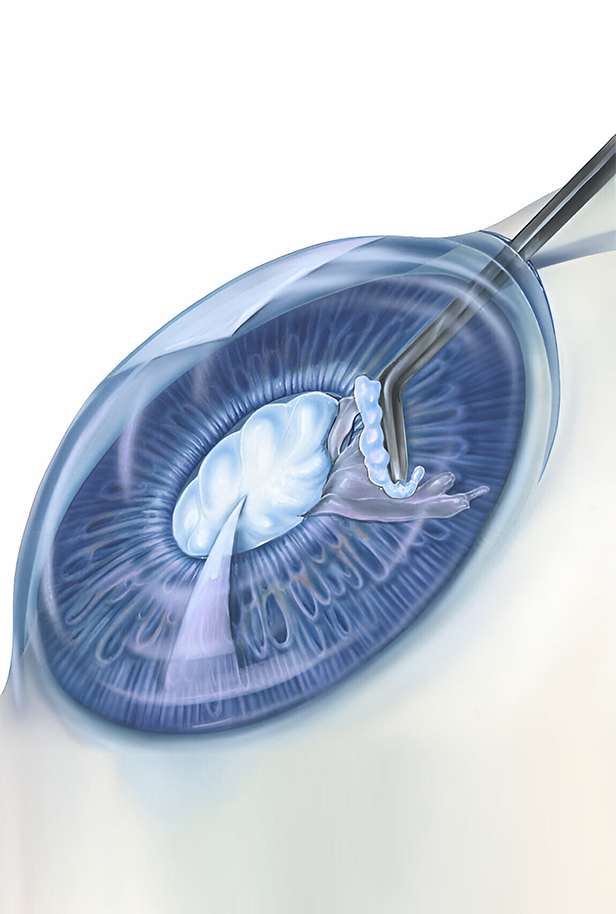

Get Stem Cell Therapy for Age Related Macular Degeneration
- The retinal pigment epithelium (RPE) is a multifunctional monolayer situated at the back of the eye that the light-sensing photoreceptors need to live and work.
- The depletion of RPE cells leads to photoreceptor death and permanent blindness in Age-related Macular Degeneration (AMD).
- RPE cell transplantation is designed to interrupt or reverse vision loss by stopping the death of photoreceptor cells and is considered one of the most viable stem cell treatment applications in the field of photoreceptor cell therapy for degeneration.
- In animal models and humans using primary RPE cells, proof-of-concept RPE cell transplantation has long been known to treat retinal degenerative diseases such as AMD, although recent study has centered on the transplantation of RPE cells derived from human pluripotent stem cells (hPSC).
- Early clinical trial findings show that transplantation of RPE cells derived from hPSC is healthy and can enhance vision in patients with AMD. Present processing procedures of hPSC-RPE cells used in clinical trials.
- Treatment of large numbers of patients with AMD using stem cell derived products can rely on the ability to produce usable cells using robust and clinically compliant methods from multiple hPSC lines.
- The effects of transplantation can be enhanced by providing RPE cells to a thin porous membrane for better penetration into the retina and by modifying the outcome by regulating immune rejection and inflammatory responses. Global Stem Cell Care helps you obtain the best treatment under the expert guidance of professionals and experts.
Get Stem Cell Therapy for Age Related Macular Degeneration
- The retinal pigment epithelium (RPE) is a multifunctional monolayer situated at the back of the eye that the light-sensing photoreceptors need to live and work.
- The depletion of RPE cells leads to photoreceptor death and permanent blindness in Age-related Macular Degeneration (AMD).
- RPE cell transplantation is designed to interrupt or reverse vision loss by stopping the death of photoreceptor cells and is considered one of the most viable stem cell treatment applications in the field of photoreceptor cell therapy for degeneration.
- In animal models and humans using primary RPE cells, proof-of-concept RPE cell transplantation has long been known to treat retinal degenerative diseases such as AMD, although recent study has centered on the transplantation of RPE cells derived from human pluripotent stem cells (hPSC).
- Early clinical trial findings show that transplantation of RPE cells derived from hPSC is healthy and can enhance vision in patients with AMD. Present processing procedures of hPSC-RPE cells used in clinical trials.
- Treatment of large numbers of patients with AMD using stem cell derived products can rely on the ability to produce usable cells using robust and clinically compliant methods from multiple hPSC lines.
- The effects of transplantation can be enhanced by providing RPE cells to a thin porous membrane for better penetration into the retina and by modifying the outcome by regulating immune rejection and inflammatory responses. Global Stem Cell Care helps you obtain the best treatment under the expert guidance of professionals and experts.

What to Expect from Stem Cell Treatment for Age Related Macular Degeneration?
Most cases of AMD involve the form of the condition known as dry AMD, which develops slowly. Currently, as of 2020, there are no treatment options available for dry AMD, but some promising new therapies are in it. The slow-developing form of AMD, called dry AMD, constitutes the majority of AMD cases. There are no treatment options currently available for dry AMD as of 2020, but some exciting new treatments are in the pipeline.
Global Stem Cell Care is the best and the most reliable AMD stem cell treatment in India. If you wish to get the best treatment stem cell treatment for Age Related Macular Degeneration, then contact Global Stem Cell Care.
For all aspects of medicine today, including multiple cases of cancer, as well as for dry AMD, stem cell treatment is gaining momentum. The aim of stem cell treatment for AMD is to be able to replace retinal cells that have been damaged or killed by symptoms with new stem cells.
Stem cells are also inserted, through IV infusion, into the blood supply of the body. But, experts are focusing on how the stem cells can be transplanted directly into the eyes. One strategy involves placing the stem cells into a fluid suspension that can be injected under the retina.
Most cases of AMD involve the form of the condition known as dry AMD, which develops slowly. Currently, as of 2020, there are no treatment options available for dry AMD, but some promising new therapies are in it. The slow-developing form of AMD, called dry AMD, constitutes the majority of AMD cases. There are no treatment options currently available for dry AMD as of 2020, but some exciting new treatments are in the pipeline.
Global Stem Cell Care is the best and the most reliable AMD stem cell treatment in India. If you wish to get the best treatment stem cell treatment for Age Related Macular Degeneration, then contact Global Stem Cell Care.
For all aspects of medicine today, including multiple cases of cancer, as well as for dry AMD, stem cell treatment is gaining momentum. The aim of stem cell treatment for AMD is to be able to replace retinal cells that have been damaged or killed by symptoms with new stem cells.
Stem cells are also inserted, through IV infusion, into the blood supply of the body. But, experts are focusing on how the stem cells can be transplanted directly into the eyes. One strategy involves placing the stem cells into a fluid suspension that can be injected under the retina.
VIP TREATMENT TO PATIENTS AT GLOBAL STEM CELL CARE
The therapy sessions given to the patients at Global Stem Cell Care occur in the VIP treatment room in the advanced clinic.
24*7 supervision is maintained on the patients by the efficient medical team.
Global Stem Cell Care highly recommends the patients stay for a minimum of 3 days in Hospital.

GLOBAL STEM CELL CARE TREATMENT PROCEDURE
The treatments that take place in Global Stem Cell Care are of 3 days. The treatment protocol is safe and non-invasive. The patients can travel the next day. The following is the day-wise schedule for the patients.
- Pick up from the Airport to the Hospital
- Interaction between Dr and Patient, to clear all their doubts at that time
- Admission procedure
- Clinical examination & Lab test will be done prescribed by the doctor
- Supportive Therapy
- Stem cell Procedure
- Supportive therapies
- Physiotherapy
- Supportive Therapy
- Physiotherapy
- Discharging formalities
- Drop back to the Airport
- For Admission, carry the identity card (Passport/ Pan Card / Driving License)
- Carry the hard copy of Patient reports
Our Promise
There are several ways to treat age related macular degeneration but they only reduce the symptoms. At Global Stem Cell Care, we promise you to provide the best stem cell therapy to treat your condition from the roots. Stem Cells have the regenerative potential to replace the dysfunctional tissue with the new one to make your eye condition better. We offer hope to those who are suffering from age related macular degeneration through this innovative medical approach. Our doctors will guide you and provide answers to all your questions which make sure that you know everything about the treatment and procedure. We are dedicated to providing you the confidence and compassionate care during your treatment, so you don’t lose hope.
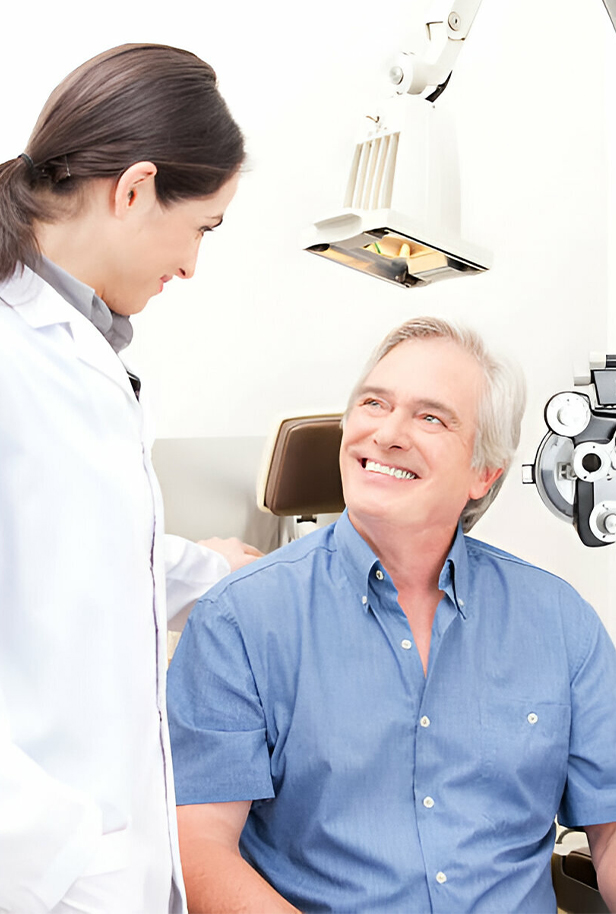

Cost
Age related macular degeneration is a dangerous eye disorder which can affect a person’s central vision or even go blind. After several clinical trials and research, we introduce the innovative treatment known as stem cell treatment. These cells have the ability to differentiate into several specialised types of cells and have the potential to regenerate the damaged tissues which makes it expensive. But this is not the only factor which affects the cost fluctuation. Some are types of stem cell you want to use, severity of the condition, type of condition and many more. Furthermore, there is addition of other factors such as consultation fees, transportation, post-treatment care, etc.
Success Rate
Stem cell therapy for AMD shows remarkable outcomes. But there are various factors which are responsible for a positive success rate such as age of the patient, stage of the disease, type of stem cells, etc. We do several clinical trials that show stem cell therapy is an effective approach to treat this eye disorder and improve vision. At Global Stem Cell Care, we provide personalised treatment plans which fulfil the needs of each patient. You can see our testimonial section to make sure how we provide positive results through this innovative approach. But success rate is not the same for all, some patient’s experience remarkable changes in their eye condition while others experience temporary results. Our researchers are doing rigorous clinical trials to make this treatment affordable and successful for all.
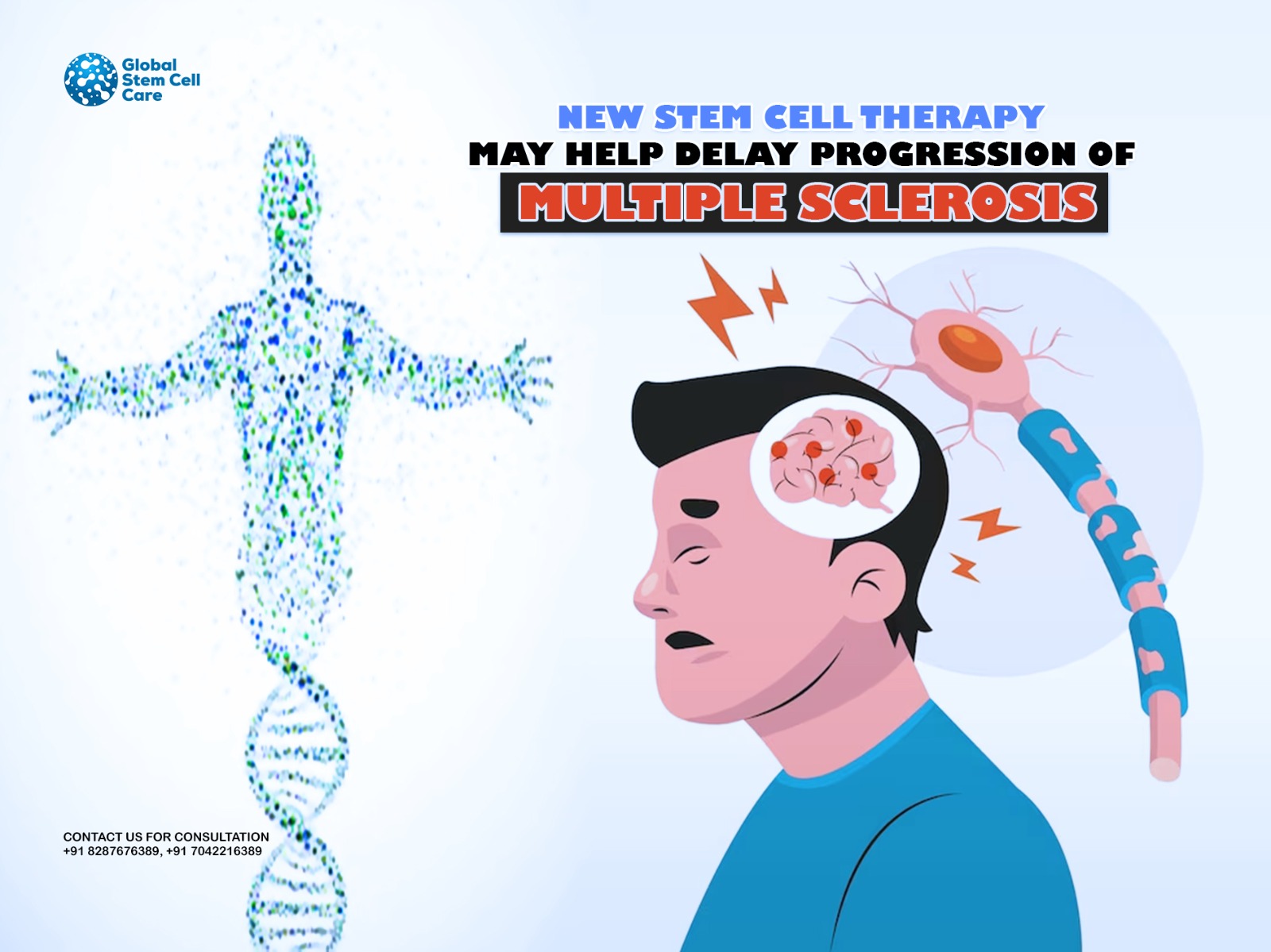

Advantages
Stem cells are the best option for treating age related macular degeneration because of its capability to replace the damaged tissues and stop the progression of this condition. Because of its numerous advantages, people preferring stem cell therapy over traditional treatment:
- Regenerative Potential: Stem cells have the remarkable ability to differentiate into various cell types including retinal cells. You can experience positive outcomes after taking this therapy.
- Long-lasting Effects: Unlike symptomatic treatments such as anti-VEGF injections, stem cell therapy aims at addressing the root cause of AMD by regenerating healthy retinal tissue, potentially providing long-lasting benefits.
- Reduced Dependency: Stem cell therapy may reduce the need for frequent injections or surgeries, decreasing patient dependency on conventional treatments and improving quality of life.
- Personalised Treatment: Stem cell therapy can be tailored to individual patients, with cells derived from their own bodies (autologous) or from compatible donors (allogeneic), minimising the risk of rejection and maximising efficacy.
- Potential to Halt Progression: By repairing damaged retinal tissue, stem cell therapy holds promise in halting the progression of AMD, preventing further deterioration of vision.
- Enhanced Functional Outcomes: Studies suggest that stem cell therapy not only improves visual acuity but also enhances visual function, including contrast sensitivity and low-light vision, leading to a better overall visual experience for AMD patients.
Quality Control
Quality control is paramount in ensuring the safety and efficacy of stem cell therapy for Age Related Macular Degeneration (AMD). Rigorous processes are essential to guarantee the purity, potency, and consistency of stem cell products, mitigating risks and enhancing patient outcomes.
- Source Verification: Thorough verification of stem cell origin ensures adherence to ethical standards and minimises contamination risks.
- Culture Conditions: Optimal culture conditions, including media composition and environmental factors, are meticulously controlled to maintain cell viability and functionality.
- Genetic Stability: Regular genetic stability assessments prevent aberrations that could compromise therapeutic efficacy or induce adverse effects.
- Sterility Assurance: Stringent sterilisation protocols safeguard against microbial contamination, safeguarding patient safety.
- Long-term Monitoring: Continuous monitoring post-administration enables the evaluation of long-term safety and efficacy, guiding future refinements and improvements.
Quality Certificate
Global Stem Cell Care provides a quality certificate for Stem Cell Therapy in treating Age-Related Macular Degeneration (AMD). This certification attests to the clinic’s adherence to stringent standards, ensuring efficacy and safety. Each therapy undergoes rigorous testing and validation processes, meeting international regulations and best practices. The certificate signifies comprehensive quality control measures, from sourcing stem cells to treatment administration. Patients can trust in the expertise of qualified medical professionals and state-of-the-art facilities. With this certification, Global Stem Cell Care reaffirms its commitment to delivering effective and reliable therapies for AMD, offering hope and improved vision outcomes for patients worldwide.

What to Expect from Stem Cell Treatment for Cerebral Palsy?
Global Stem Cell Care provides the best medical treatment to patients suffering from Cerebral Palsy. The treatment methodologies followed by the medical team of Global Stem Cell Care has no side effects as they provide the best healing to the patients.
The best of medical facilities and treatment is given to Global Stem Cell Care patients. The majority of the patients show remarkable improvements in their condition.
For more than ten years, Global Stem Cell Care has been healing patients and increasing their quality of life.
In various patients, the effects of the treatment vary due to different biological factors. The Global Stem Cell Care patients get the quality services as there is a protocol that is followed by the team of Global Stem Cell Care that includes testing for the inflammation developing factors before the treatment commences.
The testing is done during the treatment also. Research is being done on the efficacy of Allogeneic Stem Cell Therapy, and for that, the data is required for future prognosis to know the treatment after-effects on the patient.
![]() It is important to consult with an experienced specialist who will help you with existing treatments that work with the type of macular degeneration you have now, before these innovative therapies come to life.
It is important to consult with an experienced specialist who will help you with existing treatments that work with the type of macular degeneration you have now, before these innovative therapies come to life.
![]() We have physicians available to consult for you and our doctors will carry out innovative treatments to help you keep your eyes as safe as they can be. Through stem cell therapy by Global Stem Cell Care, improvements can be seen in the symptoms of the patients.
We have physicians available to consult for you and our doctors will carry out innovative treatments to help you keep your eyes as safe as they can be. Through stem cell therapy by Global Stem Cell Care, improvements can be seen in the symptoms of the patients.
Possible Improvement
It may be terrifying to imagine a life with no simple core vision, but there is justification to be optimistic. Doctors continue to search at ways to support persons with this disease, and they come up with new treatments that might one day act as a treatment. For starters, stem cell studies are underway now and in the future they might suggest a treatment.
FOLLOW UP
The follow up is the most important stage through which the doctors make the assessment of the condition of the patient. Without the follow-up, the treatment of Cerebral Palsy cannot be completed. According to the doctor’s recommendation, the patient has to come to visit.
FREQUENTLY ASKED QUESTIONS
Q. What is Macular Degeneration?
A. The core section of the eye, which tends to deteriorate with age leading to macular degeneration, is macular. The retina is the most light-sensitive portion of the human eyes and the vision would be increasingly impaired if any issue arises in this part. However while it won’t result in complete blindness, it will lead to severe vision deficiency. Aged people are more vulnerable to this condition, mostly elderly people.
Q. What are the causes of Macular Degeneration?
Q. What are the Symptoms of Macular Degeneration?
Q. What is the Treatment Available for Macular Degeneration?
Useful Tags
Stem Cell Treatment for Age Related Macular Degeneration, Stem Cell Therapy for Age Related Macular Degeneration in India, Stem Cell Therapy for Age Related Macular Degeneration Cost in India, Affordable Stem Cell Therapy for Age Related Macular Degeneration in India, Low Cost Stem Cell Therapy for Age Related Macular Degeneration in India, Price of Stem Cell Therapy for Age Related Macular Degeneration in India, stem cell treatment for Age Related Macular Degeneration in Delhi, stem cell treatment for Age Related Macular Degeneration in India, stem cell Hospital for Age Related Macular Degeneration in Delhi,
